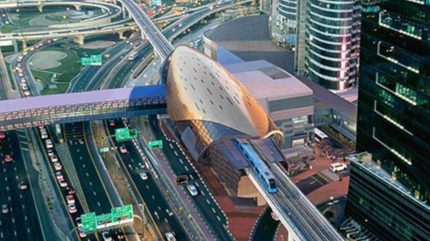
The Roads and Transport Authority (RTA) of Dubai, in partnership with real-estate development company Emaar Properties, has announced an expansion of the Burj Khalifa/Dubai Mall Metro Station.
This expansion is expected to increase the station’s area from 6,700m² to 8,500m² and its hourly capacity from 7,250 to 12,320 passengers, marking a 65% rise.

Discover B2B Marketing That Performs
Combine business intelligence and editorial excellence to reach engaged professionals across 36 leading media platforms.
The expanded station will be able to accommodate up to 220,000 passengers daily.
The project aims to improve the passenger experience, particularly during peak times such as New Year’s Eve and public holidays.
Since its inauguration in early 2010, the station has been said to have seen a steady increase in usage. Passenger numbers have grown from 6.13 million in 2013 to over 10.57 million in 2024, with daily boarding and alighting nearing 58,000.
Dubai RTA director general and executive director board chair Mattar Al Tayer said: “The Burj Khalifa/Dubai Mall Metro Station is a key hub in the Dubai Metro network, thanks to its strategic location near Burj Khalifa, Dubai Mall, and Dubai Downtown.

US Tariffs are shifting - will you react or anticipate?
Don’t let policy changes catch you off guard. Stay proactive with real-time data and expert analysis.
By GlobalData“It serves as a convenient and efficient gateway for residents and visitors, particularly during large-scale events and holidays, particularly New Year’s Eve, Eids, national events and public holidays.
“This expansion project responds to sustained and rising demand for metro services, with projections extending to 2040. Passenger numbers during New Year’s Eve exceed 110,000, and the station has recorded an average annual ridership growth of 7.5% over the past five years.”
The upgrade includes not only the expansion of the station’s physical space but also the enhancement of its facilities.
The station’s design will continue to follow the architectural concept of the elevated stations on the Red and Green Lines of the Dubai Metro, inspired by the shape of a seashell.
The internal design prioritises safety and security, with a focus on reducing walking distances and maintaining visual connectivity.
Ground-level entrances will be integrated with public transport and alternative mobility options such as bicycles and e-scooters, ensuring direct pedestrian access and integration with the urban environment.
The station will be inclusive, catering to the requirements of those with disabilities, older residents, and parents with pushchairs.
Earlier this month, Dubai’s RTA placed the foundation stone for the Dubai Metro Blue Line project that will cover 30km and feature 14 new stations.



